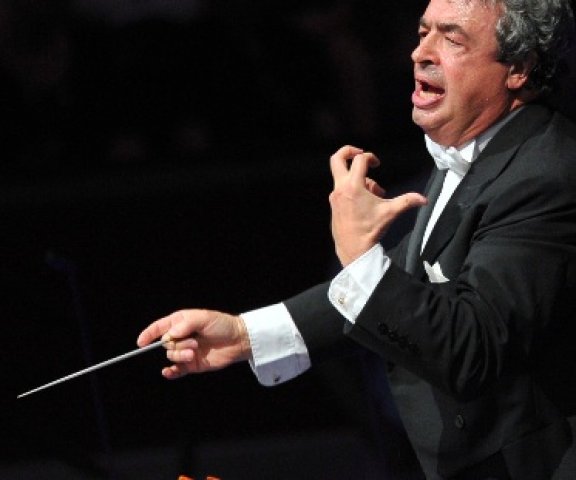Semyon Bychkov Conducts NY Philharmonic
Brahms, Mendelssohn, and Shostakobich
By: Susan Hall - May 20, 2018
New York Philharmonic
Conducted by Semyon Bychov
Bertrand Chamayou, Piano Soloist
David Geffen Hall
Lincoln Center
New York, New York
May 19, 2018
Brahms Tragic Overture
Mendelssohn Piano Concerto No. 1
Shostakovich Symphony No. 5
Brahms' Tragic Overture opened this week's program at the New York Philharmonic. Led by the consummate conductor, Semyon Bychkov, this overture has a combination of lyric beauty intermixed with furious music. Brahms debated calling this work 'dramatic' and settled on 'tragic.' The combination of melodic beauty and furious music-making would characterize the evening. Subtle phrasing was contrasted with an aggressive musical attacks.
Mendelssohn's First Piano Concerto was composed when he was 22. We begin to prepare for the tempestuous fury the evening promised. Already Mendelssohn understood the dynamics of the piano and explores them in delicate phrasing and rhapsodic rushes that entrance.
Piano and orchestra alternate in grand gestures. Lyricism answers to the fury, as though to tame the savage beast. Fanfares punctuate moments of great beauty. An aching Rondo brings the concerto to a furious conclusion.
Pianist Bertrand Chamayou made his Philharmonic debut with panache. He is as full of spark and zest as the composer. Combining weight with smoothness, he is uses his skill as the ballast for delicate runs and lovely lyric lines amidst Lisztian pyrotechnics. Chamayou is a pianist to watch.
Shostakovich is a specialty of Bychkov's. The conductor is not afraid to show the extremities of the composer's Fifth Symphony and to take the orchestra with him. From the first conversations between the cellos and basses with the violins, playing a canonic two-note phrase, Bychkov listens for singular lines and shapes to suggest interchanging phrases. Throughout the symphony, beautiful solos on flute, celeste, horn and bassoon are carved.
Bychkov brings breath and air to music, which can then ride on core concepts. A melody sometimes lingers on long-held notes. The very same melody then rushes. Cello notes are often positioned very low on the instrument, or very high. The instrumentalists struggling to achieve these notes feels right in this symphony. The orchestra playing in a satisfying unison ends as the music evaporates.
Like Mahler picking up folk tunes, Shostakovich uses the charming sounds of a Vienna cafe and the mincing songs of a music box. Brass is singularly absent in the third movement, which has its own haunting sadness in the hymn-like rhythms. By holding back here, the wild introductory sounds of the last movement are earned.
Attention to both the speed of the music and its tone never burdened performance. Whispered sections were in stark contrast to crashing cacophony that erupts at the beginning of the fourth movement. Clouds of powerfully suggestive music fill Geffen Hall in blistering notes. The Philharmonic was in top form for this glorious conductor.

